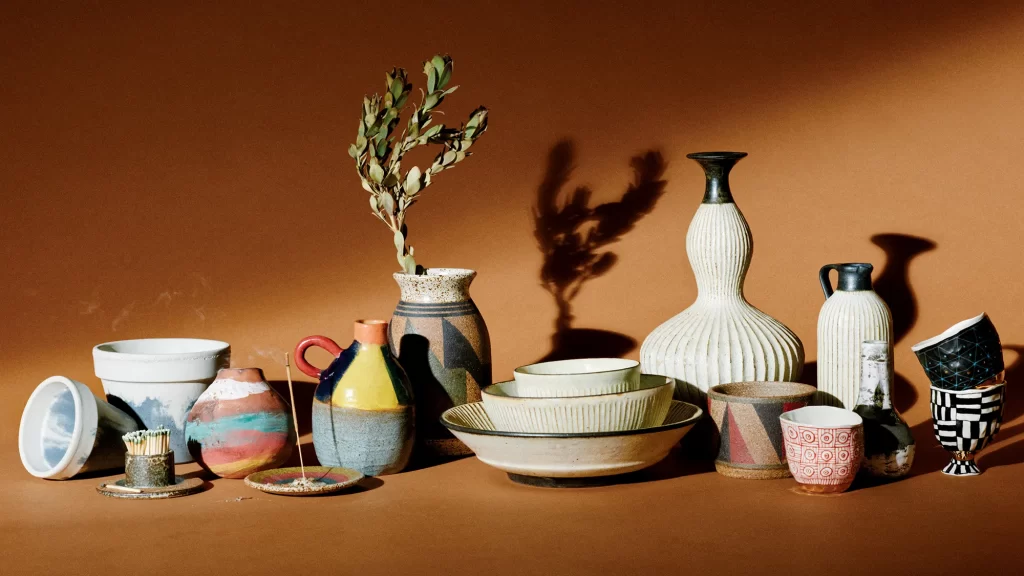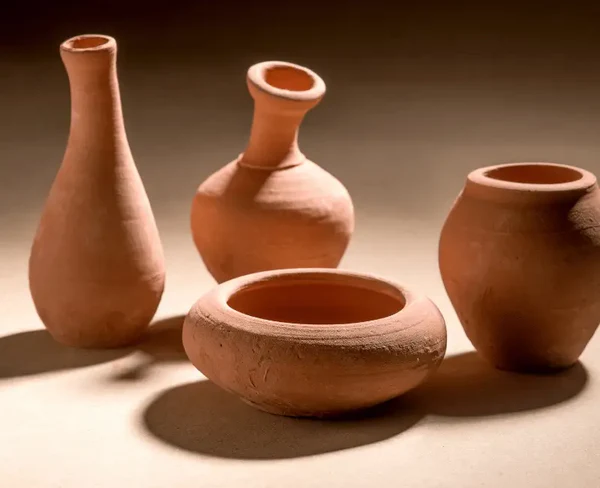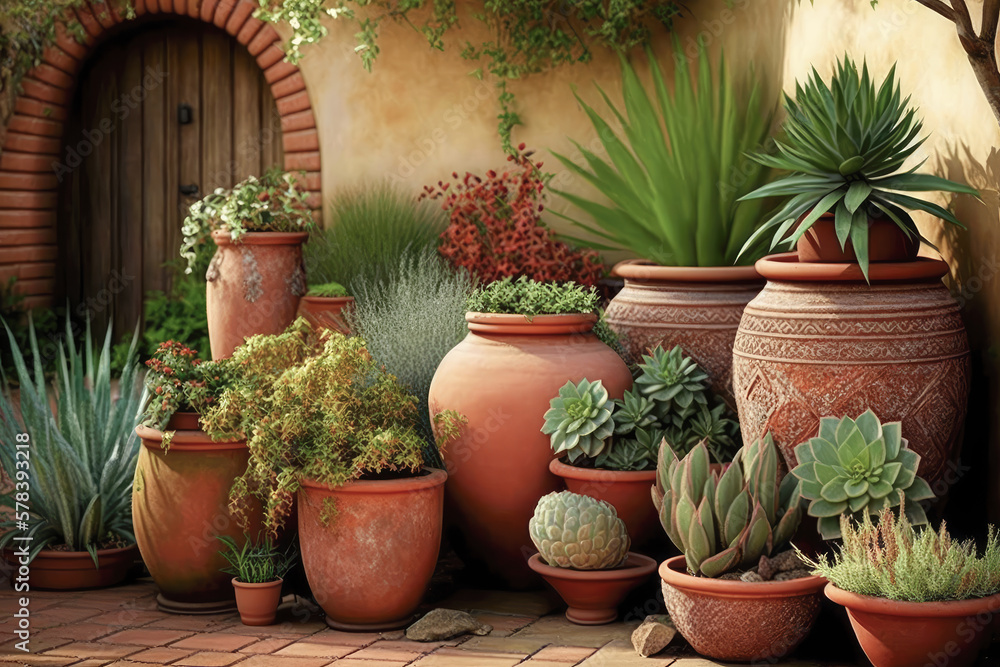Ceramics and terracotta are ancient materials with rich histories that have profoundly influenced art, culture, and technology. Although they share similarities, significant differences set them apart. This article explores the origins, production processes, uses, properties, and cultural significance of ceramics and terracotta, providing a detailed comparison to appreciate their unique contributions to human civilization.
Origins and Historical Background
Ceramics:


Ceramics have been a part of human history for thousands of years, with evidence of their use dating back to around 24,000 BCE. The term “ceramics” comes from the Greek word “keramikos,” meaning “of pottery” or “for pottery.” This broad category includes various materials like earthenware, stoneware, porcelain, and bone china. Ancient civilizations such as the Egyptians, Greeks, Chinese, and Romans extensively used ceramics for functional and decorative purposes. The invention of the pottery wheel around 3000 BCE in Mesopotamia marked a significant advancement in ceramic production, allowing for more intricate and uniform shapes.
Terracotta:


Terracotta, derived from the Italian words “terra” (earth) and “cotta” (cooked), literally means “cooked earth.” This form of earthenware has been used since ancient times, with its roots tracing back to Neolithic cultures. Terracotta has been particularly prominent in ancient Greece, Rome, and China. Notable examples include the Terracotta Army in China, dating back to the 3rd century BCE, which comprises thousands of life-sized figures intended to protect Emperor Qin Shi Huang in the afterlife. Terracotta’s accessibility and ease of production made it a popular choice for a wide range of applications, from building materials to artistic sculptures.
Production Processes
Ceramics
The production of ceramics involves several stages, including the selection of raw materials, shaping, drying, and firing. The primary raw materials are clay, kaolin, silica, and feldspar. The process begins with the preparation of the clay, which is then shaped using methods like hand-building, wheel-throwing, or slip casting. The shaped object is left to dry to remove excess moisture before being fired in a kiln at high temperatures, ranging from 1000°C to 1400°C, depending on the type of ceramic. Firing transforms the clay into a hard, durable material. Glazing, which involves applying a liquid glass coating, is often done before a second firing to add color, texture, and impermeability.
Terracotta
Terracotta production is simpler compared to other ceramics. It primarily uses red or brownish clay, rich in iron oxide. The clay is shaped by hand, molds, or the pottery wheel and then dried to remove moisture. Firing typically occurs at lower temperatures, between 600°C and 1000°C. Unlike other ceramics, terracotta is usually left unglazed, giving it its characteristic porous, matte surface. However, it can be glazed or painted for decorative purposes. The lower firing temperature and minimal finishing processes make terracotta relatively easier and quicker to produce.
Properties and Characteristics
Ceramics
Ceramics exhibit a wide range of properties depending on their type and composition. Common characteristics include hardness, brittleness, and resistance to heat and chemical attack. High-fired ceramics like porcelain are non-porous, vitrified, and can withstand extreme temperatures, making them suitable for a variety of industrial and household applications. The versatility of ceramics allows for the production of items ranging from delicate porcelain tea sets to robust industrial components.
Terracotta
Terracotta is known for its warm, earthy hues and rustic appearance. Its porous nature makes it less durable and water-resistant compared to high-fired ceramics. However, this porosity allows terracotta to breathe, making it ideal for applications like plant pots, where moisture regulation is beneficial. The material’s natural insulating properties also make it suitable for building bricks and tiles. While not as strong or versatile as other ceramics, terracotta’s aesthetic appeal and ease of production make it a favorite for decorative items and sculptures.
Uses and Applications
Ceramics:


The applications of ceramics are incredibly diverse. In the art world, ceramics are used to create beautiful pottery, sculptures, and decorative objects. In everyday life, ceramic materials are found in dinnerware, sanitary ware, tiles, and cookware. Industrial applications include electrical insulators, aerospace components, and biomedical implants. Advanced ceramics, such as silicon carbide and aluminum oxide, are essential in high-tech industries due to their superior mechanical and thermal properties.
Terracotta:


Terracotta’s primary uses are in construction and decorative arts. In architecture, terracotta bricks, tiles, and architectural ornaments have been widely used for their aesthetic and functional properties. Gardenware, including pots and planters, is another common use, taking advantage of terracotta’s breathability and natural look. Terracotta has also been a popular medium for sculptures and figurines, from ancient artifacts to contemporary art pieces.
Cultural Significance
Ceramics
Ceramics hold significant cultural and historical value across various civilizations. Chinese porcelain, often referred to as “white gold,” played a crucial role in trade and cultural exchange along the Silk Road. The intricate designs and craftsmanship of Greek and Roman pottery provide insights into their societies and daily lives. In modern times, ceramics continue to be a medium for artistic expression and innovation, blending traditional techniques with contemporary designs.
Terracotta
Terracotta’s cultural impact is equally profound. The Terracotta Army stands as a testament to the craftsmanship and artistry of ancient China. In the Mediterranean, terracotta sculptures and architectural elements have left a lasting legacy, showcasing the skill and creativity of ancient artisans. Terracotta’s use in traditional pottery and building materials reflects the material’s importance in everyday life and its enduring appeal.
Conclusion
Ceramics and terracotta, though often used interchangeably, have distinct characteristics and applications that make each material unique. Ceramics encompass a broad range of materials with varying properties, making them versatile and indispensable in numerous fields. Terracotta, with its rustic charm and historical significance, remains a beloved material for decorative and functional purposes. Understanding the differences and appreciating the unique qualities of each material enhances our knowledge of human ingenuity and the enduring legacy of these ancient crafts.
Re: Hiep Loi IV



